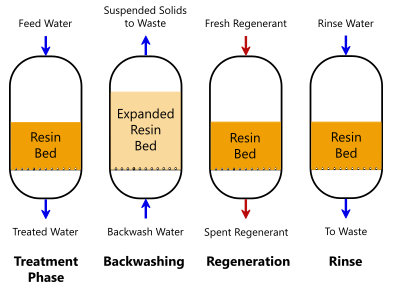The Importance of PFAS Treatment in Cleaning Polluted Water
Ingenious PFAS Therapy Solutions for Safer Water
The enhancing occurrence of PFAS contamination in water products necessitates an important exam of ingenious therapy solutions. Additionally, emerging bioremediation methods use an even more lasting strategy to tackling PFAS challenges. pfas management.
Summary of PFAS Contamination
PFAS contamination has actually become a substantial ecological and public wellness concern. Per- and polyfluoroalkyl substances (PFAS) are a group of synthetic chemicals known for their determination in the atmosphere and body, leading them to be frequently described as "permanently chemicals." These substances have been commonly utilized in various sectors, consisting of firefighting foams, water-repellent textiles, and food product packaging, mostly because of their water- and grease-resistant residential or commercial properties.
The widespread use PFAS has actually caused their discovery in soil, water supplies, and also in the blood of human beings and pets. Research studies have connected PFAS direct exposure to many health and wellness problems, including developmental effects in babies, body immune system dysfunction, and various kinds of cancer cells. Furthermore, the environmental perseverance of these substances complicates their destruction and elimination, increasing concerns concerning long-lasting environmental impacts.
Governing bodies are increasingly executing rigorous standards to keep track of and reduce PFAS degrees in drinking water and various other environmental tools. As understanding of PFAS contamination grows, it has actually become imperative for areas and industries to look for efficient therapy services to mitigate direct exposure and safeguard public health and wellness.
Advanced Filtration Technologies
As the necessity to attend to PFAS contamination increases, advanced purification innovations have actually emerged as a crucial component in the remediation initiatives targeted at getting rid of these persistent chemicals from water resources. These technologies take advantage of innovative mechanisms to successfully target and capture PFAS compounds, which are infamously resistant to traditional therapy methods.
One of one of the most promising methods is the usage of granular activated carbon (GAC), which adsorbs PFAS particles because of its high area and permeable framework. This approach has actually been extensively executed in both metropolitan and commercial setups, showing significant reductions in PFAS focus. Additionally, ion exchange resins have actually obtained traction, particularly made to selectively bind PFAS ions from water, thus facilitating their removal.
Membrane filtering modern technologies, such as reverse osmosis and nanofiltration, also show effectiveness in PFAS elimination by literally dividing impurities from water - pfas management. These systems can attain high degrees of pureness, making them ideal for drinking water applications
Chemical Treatment Innovations
Various chemical treatment advancements are being checked out to successfully resolve PFAS contamination in water products. One encouraging strategy entails the usage of innovative oxidation procedures (AOPs), which use effective oxidants such as ozone, hydrogen peroxide, or chlorine dioxide combined with UV light to damage down PFAS compounds into less damaging compounds. This here are the findings method has actually shown efficiency in lab settings, showing potential for scalability in real-world applications.
An additional cutting-edge method is the advancement of ion-exchange resins specifically designed to target PFAS. These resins can uniquely adsorb PFAS substances from water, enabling their removal throughout therapy processes. Recent innovations have actually boosted the performance and capability of these resins, making them a favorable alternative for water treatment facilities.
In addition, researchers are investigating making use of chemical agents like persulfate and ferrous ions to improve the deterioration of PFAS in polluted water. These agents can induce chain reaction that help with the breakdown of relentless PFAS compounds.
Arising Bioremediation Methods
Current innovations in chemical treatment innovations have actually paved the means for checking out bioremediation techniques as a sensible alternative for attending to PFAS contamination. Bioremediation takes advantage of the natural metabolic procedures of microorganisms to break down or transform contaminants, making it an appealing method for taking on consistent impurities like PFAS.
Emerging strategies in bioremediation include using genetically engineered bacteria that can especially target and break down PFAS compounds. These microbial pressures are being developed for their improved destruction capacities, enhancing the effectiveness of the removal process. Additionally, scientists are exploring the potential of plant-assisted bioremediation, where specific plant types might uptake and withdraw PFAS from polluted soil and water.
One more encouraging approach is the application of bioaugmentation, which includes presenting beneficial microorganisms into infected environments to improve the destruction of PFAS. This technique can assist in much faster removal timelines and improve overall effectiveness.

Governing Structures and Standards
An extensive regulative framework is vital for successfully taking care of PFAS contamination and making certain public health and wellness security. The raising acknowledgment of try this per- and polyfluoroalkyl materials (PFAS) as ecological toxins has actually motivated different government and state companies to establish criteria that control their visibility in water materials. The United State Environmental Security Company (EPA) has established health advisories and is working towards establishing enforceable restrictions for PFAS in alcohol consumption water.
State-level policies vary considerably, with some states adopting more stringent standards than those suggested by the EPA. These guidelines typically include maximum pollutant levels (MCLs) for specific PFAS substances, surveillance demands, and reporting obligations for water utilities. In addition, emerging frameworks concentrate on the removal of contaminated sites, emphasizing the demand for efficient treatment modern technologies.

Conclusion
To conclude, the growth and application of ingenious PFAS treatment remedies are essential for attending to the pervasive issue of water contamination. Advanced purification technologies, chemical treatments, and arising bioremediation methods collectively offer a diverse method to effectively lower and deteriorate PFAS levels. As governing frameworks remain to develop, integrating these modern technologies will certainly be important to protect public wellness and bring back the integrity of polluted water sources, inevitably adding to a cleaner and much safer environment.